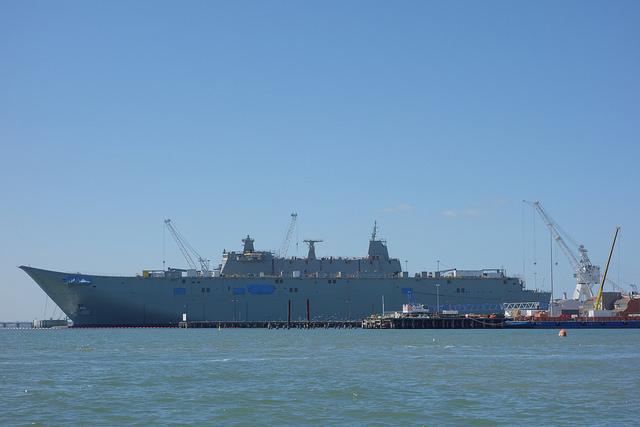If there’s one thing we’ve learned in the last 25 years, it’s that government can’t successfully run naval dockyards in Australia. This is why the National Commission of Audit recommended the immediate privatisation of ASC.
There are three other important lessons that we must heed if we are to create an efficient, enduring naval construction industry in Australia. The first is the requirement for a single highly competent prime contractor responsible for the delivery of the whole vessel, including systems integration.
Second, we must ensure that the chosen platform is subject to tight capability and configuration control and the use of the most advanced existing systems and equipment. Avoid R and D type solutions at all costs, and go with proven performers.
Finally, we should have confidence that we can successfully build complex warships here, adding to our high technology base and giving us the intellectual property and local capability to maintain, modify, and update naval vessels over a 30-year operating life.
Local construction gives us a much larger degree of independence than a build in an overseas dockyard. This is particularly important for a country at the end of a long maritime supply chain. The savage reality of this lesson was learnt early in WW2 when we struggled to defend ourselves.
The best recent example is the Anzac Warship Project, where 10 ships were delivered on time and on budget with full operational capability. They were designed by Blohm and Voss (now ThyssenKrupp Marine Systems TKMS) to suit Australian and New Zealand requirements, and built and integrated by a single prime contractor—Transfield Defence Systems—at the privatised Williamstown Naval Dockyard. With a new, vastly more productive workforce, ten Anzac frigates were built under fixed price contracts.
The combat system for the Anzac frigates was supplied by Sweden and developed in Adelaide. The cost penalty over a full ship build in Germany was negligible and more than offset by the long-term local industry support network. Local content in the project amounted to 80%.
These hard-learned lessons should be applied to the acquisition of our next generation submarines. The RAN has unique requirements: quiet, conventionally powered vessels able to operate in littoral waters and undertake extended, long-range patrols far from Australia. An ‘off-the-shelf’ solution to replace the Collins class isn’t an option.
We should build on the lessons learned from the Collins-class submarines which, despite the well-known problems with systems integration and overseas suppliers, were successfully built in Adelaide. Both the Anzac frigate project and the Collins submarines’ construction reached international benchmarks of productivity and quality as well as helping sustain more than a thousand SMEs across Australia.
We also need to learn from the difficulties and cost overruns experienced by the Air Warfare Destroyer (AWD) project. It isn’t fair to use the AWDs as the key criterion to make decisions about the capability of local defence industry to undertake future naval construction in Australia. The AWD alliance structure was flawed from the start, with the ship’s designer left out of the alliance, and without a single experienced naval shipbuilder in charge.
The construction of the Anzac frigates and the Collins class submarines followed a series of well-established procedures in Defence procurement, starting with a careful identification of the RAN’s top-level requirements for each platform. After the selection of a short-list of experienced offshore designers, funded project definition studies led to the submission of fixed price tenders for a local build which maximised the involvement of Australian industry. The Abbott government should follow this well-proven, risk-reduction path.
Our successful naval shipbuilding experience in Australia in the 1990’s showed that we could build surface warships and submarines simultaneously. The Abbott government should have confidence that, with the right defence procurement procedures and contractual arrangements in place, and with construction in privately-operated dockyards, the future submarines and the future frigates can be built successfully in Australia.
Our next generation submarines should be built in Adelaide in a privatised dockyard with a single prime contractor using a proven, suitable design from a proven designer. This isn’t for xenophobic reasons. It’s for sound strategic and economic reasons.
